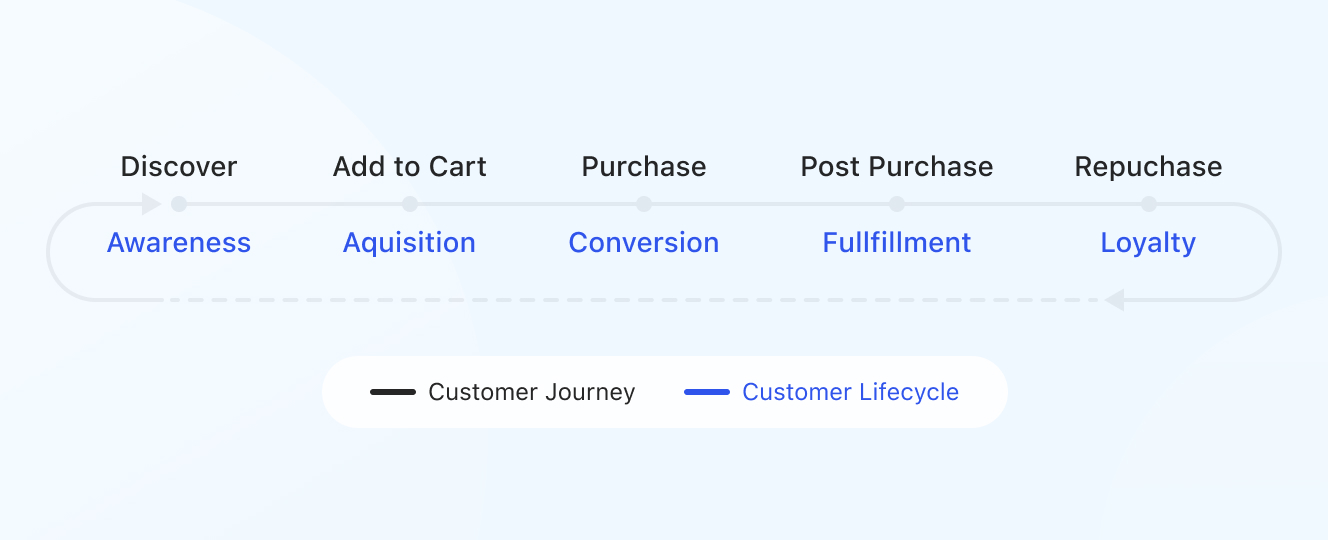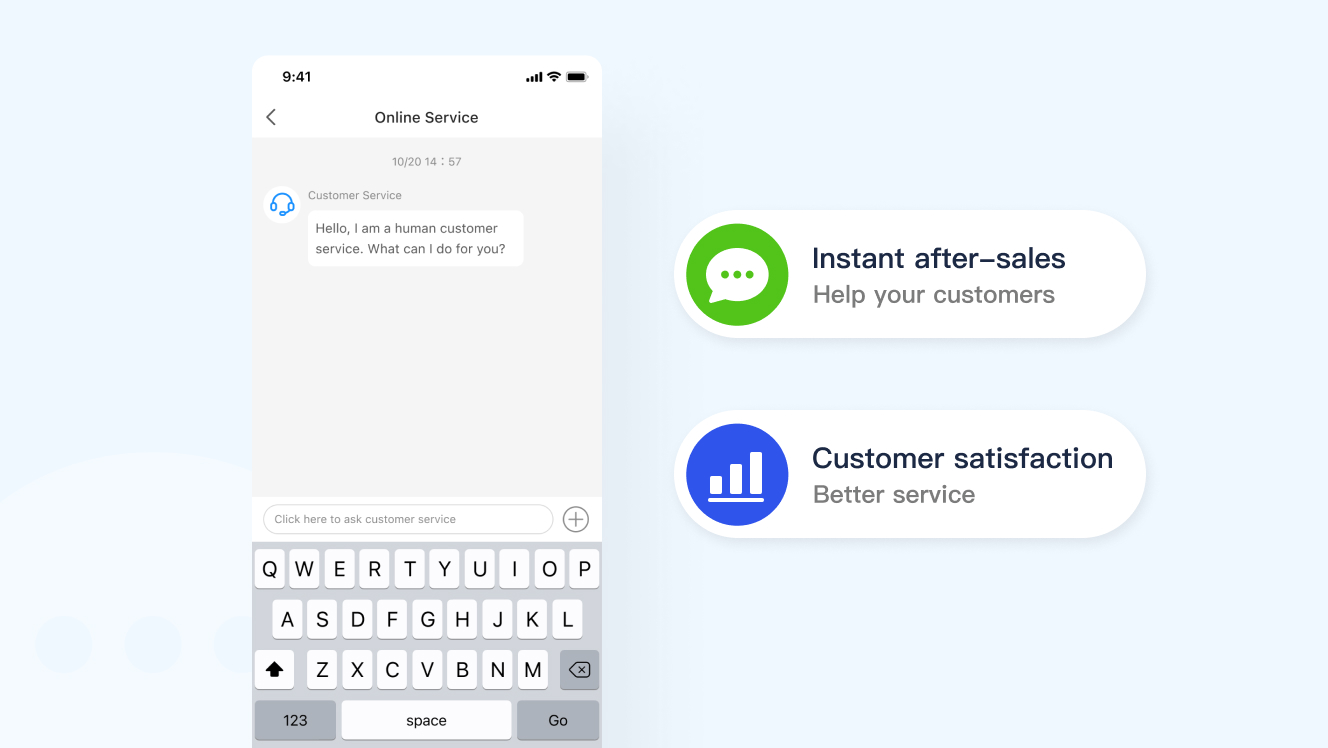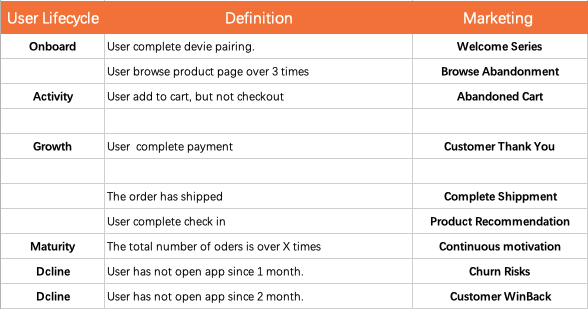Sustainable growth
Last Updated on:2023-03-10 09:26:48

For many merchants, sales growth comes from new orders. When users click the Buy button, the goal is completed. But this is just the beginning.
Some merchants miss an opportunity to boost their growth because they neglect their customers. 33% of users wouldn't repurchase after just one negative experience.
To maintain sustainable growth, you must shift your focus from acquiring new customers to increasing the retention rate and maximizing clients' value. Measuring Customer Lifetime Value (LTV) is the critical factor in defining your best customers, creating an engaging brand experience, and eventually winning marketing competition.
LTV measures the actual value of your users
LTV, or customer lifetime value, is an indicator that measures how much value a user can bring in total over a lifetime of interactions with your brand.
LTV= Average Revenue Per User x Average Customer Lifetime
For example, customers A and B spend $180 in your store. Customer A spent $180 on his first order, and customer B spent $60 per order but purchased three times.
LTV (A) = $180 x 1 = $180
LTV (B) = $60 x 3 = $180
These two customers seem to have the same value. But customer B has continued to interact with your brand throughout the year and has a higher purchase frequency. In the following year, it is likely to generate the same value, $180. Customer A maybe becomes an inactive customer after the first purchase and no longer interact with your brand. Therefore, we should pay more attention to the frequency of repeated purchases of existing users.
Products acquire customers, your brand retains them

Good marketing and sales strategy can bring you the first order of customers, which is just the beginning.
Acquiring new customers is essential, but it's not the most sustainable path towards sales growth. It is pretty challenging to convert a group of customers who don't know your brand into your customers, and the conversion cost is very high.
The brand is the key to driving retention. A brand is more than just an icon or theme color, but how customers perceive your brand, that is, the experience of interacting with your brand, from discovery to repurchase. To achieve this goal, you need to constantly shape the customer's awareness and feelings about the brand.
How to improve LTV
Customer acquisition is a starting point for customers to connect with your brand and increase stickiness. However, retention is the key to sales growth.
The easiest and fastest way to improve LTV is to offer customers an unforgettable after-sale service experience, which will lead to continuous purchases.
Here are a few things to summarize:
- After-sale experience
- Personalized content
- Loyalty program
For smart products, what are the new enlightenments and differences compared with the general e-commerce sales channels:
- Efficient after-sales experience
- Personalized marketing and service
Efficient after-sale experience

As the above data shows, more than 30% of customers will not buy the same brand's product twice.
In addition to the quality of the product, many users have no one to consult when using the product, which leads to a terrible purchase experience and loss of brand loyalty.
Because of the particularity of smart devices and the different network environments of each user, the situation is more complicated. Therefore, it is necessary to provide timely and convenient after-sale support.
In fact, smart apps are also the most efficient channel to offer after-sales support. Compared with other sales channels, users can communicate with you directly when they open the pp.
As far as you are concerned, you can not only use the smart App to deal with the problems of its product usage but also recommend more products and services. You can get more details on How to quickly build post-purchase support in Smart App.
Personalized service and marketing

After the user purchases your product, we usually use email to inform customers of the order, logistics information, and marketing activities. General marketing emails may not bring in many sales. Sometimes, customers may think that your brand is not very high-end.
You may offer some personalized services in the interaction with your customers. For example, you can send them product tutorials or invite them to join your community.
The more personalized the service, the better the customer's perception, and the more they feel that your brand respects them so that they will likely buy more products.
Users can be divided into different levels according to the user life cycle of the smart App. Only the precise classification can personalized marketing and services be carried out.

When we have more and more users, the amount of data will be increased. It is pretty hard to provide a different user experience for each customer through human support.
Here we recommend Tuya's one-stop marketing platform, which focuses on users' App behavior data and shopping data and helps you perform accurate and personalized marketing covering various social media, such as emails, SMS, and App.

Summary
Compared with other sales channels, smart App will connect you with your customers closer. While communicating with customers, you can offer accurate and personalized services based on the user's behavior data of your App and know your customers better, which will eventually win more market and customer recognition.
Is this page helpful?
YesFeedback